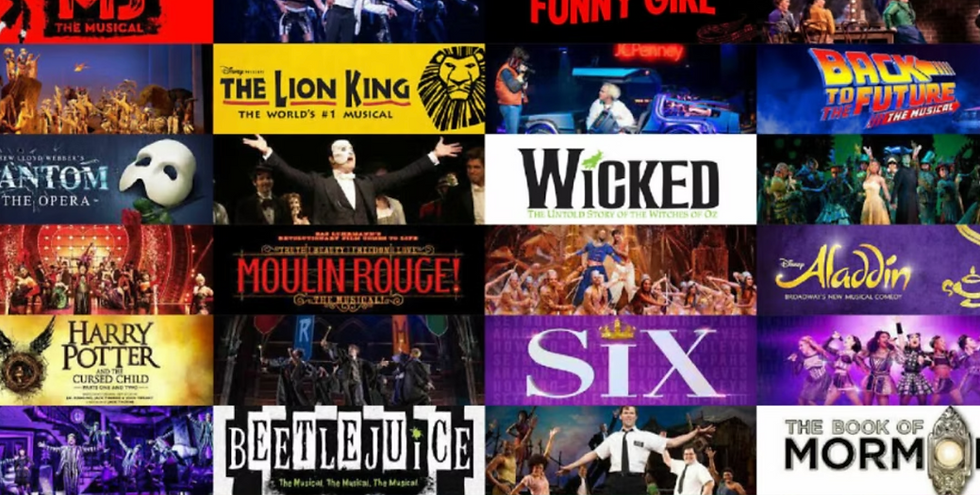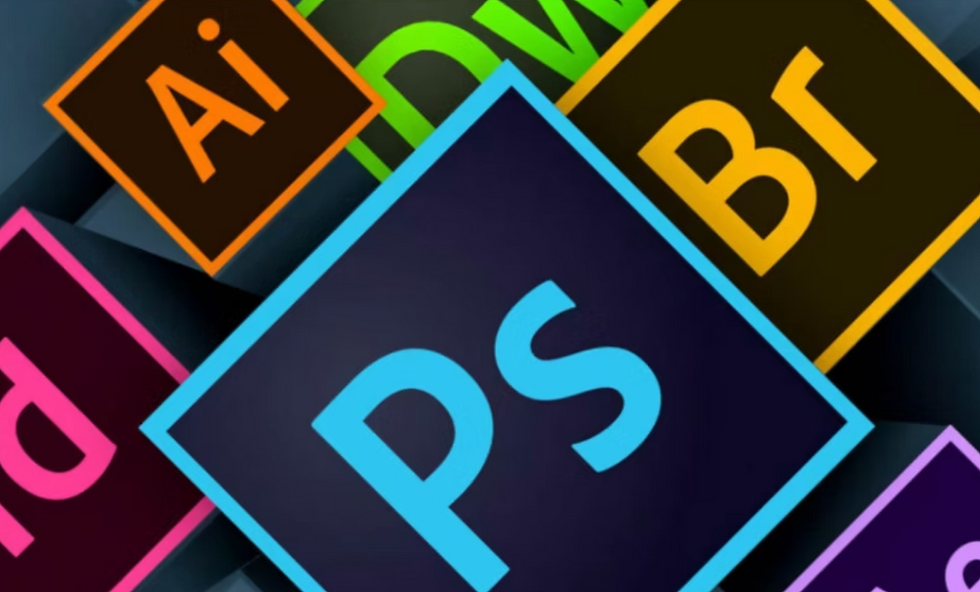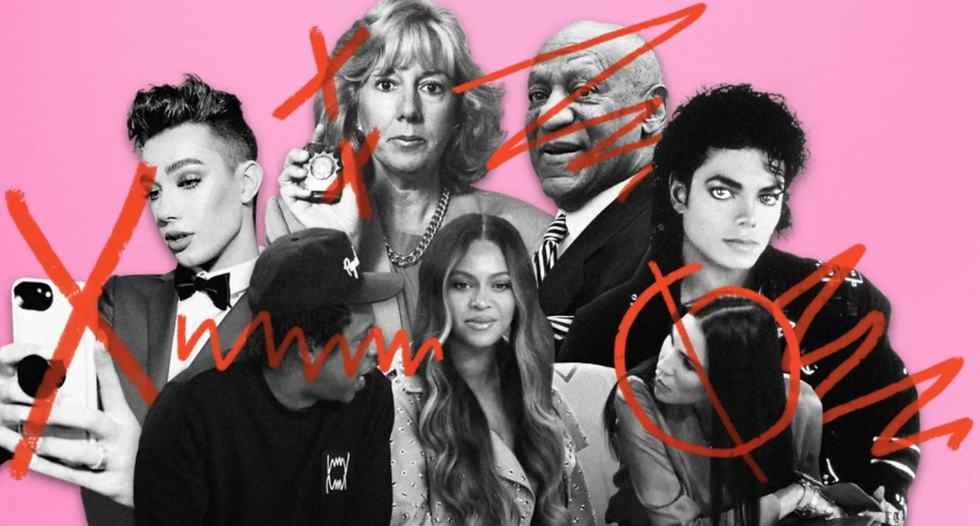DRAWING BACK THE CURTAIN ON GEN Z’S AFFINITY FOR MUSICALS
- Hope Valenti
- Aug 6
- 6 min read

The curtain is rising, and Gen Z is shining a spotlight on a whole new era of musical theatre. What was once seen as a niche art form has exploded back into the mainstream, and this generation has been the driving force behind the show-stopping revival. It all started with Hamilton, a musical that didn’t just stand in the spotlight — it owned it. Lin-Manuel Miranda’s creation brought hip-hop, history, and heart to Broadway, casting a spell on a younger audience hungry for fresh, inclusive, and bold storytelling.
Gen Z answered the call, dancing into the center stage with an enthusiasm that’s igniting a musical renaissance. This isn’t just a revival — it’s a full-blown encore, where the art form has found new life and a fresh audience ready to hum along to the tune of something exciting, dynamic, and just a little bit rebellious.
And the spotlight isn’t fading anytime soon. As musical theatre takes center stage, it's stepping right into the cinematic limelight. Upcoming films like Wicked: For Good, starring Cynthia Erivo and Ariana Grande, are ready to cast a spell on the big screen with their spellbinding performances and magical visuals. With the first film topping “Mamma Mia!” to become the top-grossing film adaptation of a Broadway musical to date, the sequel will be set up for similar box office success.
The stage is set for this high-flying adventure to reach new heights, proving that Wicked will always be a fan favorite. But that’s not all — films like Snow White and The Smurfs are ready to step into the spotlight too, transforming these classic tales into sparkling, song-filled spectacles. Frozen is also joining the fun, with a live recording of the West End production set to stream across the globe. This makes Broadway more accessible and generates even further buzz for musical theatre as the art form swells with new fans.
Gen Z’s musical love is not just a passing note — it’s creating a chorus of excitement, lighting up both Broadway and Hollywood with the kind of energy that’s hard to ignore. With musical theatre taking over both stage and screen, it’s clear that this generation isn’t just watching the show — they’re making it shine brighter than ever.
Accessibility On and Off the Stage
Musicals are more accessible than ever, and the days of scouring the Internet for shaky bootlegs or sneaky YouTube titles disguised as "slime tutorials" to get a taste of Broadway are quickly fading away. For years, the only way to see a Broadway show without traveling to New York or paying exorbitant ticket prices was to rely on low-quality, pirated videos — often recorded from the back of a theater or hidden under misleading titles that left you wondering if you’d actually found the show you were searching for. But now, thanks to streaming services like Disney+ and BroadwayHD, the magic of musicals is no longer just reserved for the lucky few who can afford a ticket or the determined fans willing to risk it all for a blurry, out-of-sync recording.
Shows like Frozen, Hamilton, and Les Misérables are being broadcast in high-quality, live-recorded formats, bringing Broadway into the living rooms of fans around the globe. This shift has not only made musicals accessible to a much wider audience but also created a more secure way for fans to enjoy the full artistic experience without sacrificing quality or resorting to questionable means. By eliminating the need for bootlegged versions, streaming has also given creators and performers the credit they deserve, ensuring that the magic of musical theatre can reach new generations in a way that’s both safe and legal. For the first time, fans no longer need to worry about grainy footage or missing scenes; they can experience the musicals they love exactly as they were meant to be seen, opening the door for a more inclusive, global musical community.
As for accessibility in the musical theatre world, this bleeds into the performers chosen for productions as well. In the 2017-2018 Broadway season, “nearly two-thirds of roles were filled by white actors on Broadway, and about 94 percent of directors were white,” according to The New York Times. While this statistic may seem alarming, the theatre world has been evolving. Now more than ever, there has been a movement toward inclusivity and diversity in Broadway. Musicals like Wicked, Hamilton, and West Side Story all highlight the importance of authentic casting.
This authentic casting has specifically been seen in 2024’s Wicked film. Despite the historical casting of able-bodied actresses to play the character of Nessarose in Wicked, this adaptation steers away from that. Casting Marissa Bode, an actress who uses a wheelchair, this version of Wicked provides great representation for the disabled community and opens a gateway to more inclusive casting. Bode expresses her sentiment by saying that this accurate representation of the disabled community is “front and center, as it should be,” as written in People Magazine. This authenticity has caused Gen Z to fall in love with every aspect of the film. The release has also sparked popular trends on TikTok, and the demand for genuine casting is clear.
Lin Manuel Miranda, the creator of the musical Hamilton, has expressed his support for the movement towards inclusivity. In this musical, Miranda casts BIPOC people for historically white and male figures such as George Washington, who was played by Christopher Jackson. So, why did he feel the need to break these casting norms? Broadway News states that it is quite simple: he wanted to “defy all kinds of outdated barriers and assumptions.” By casting diverse actors, audiences can acknowledge these societal barriers, and minorities can be represented in a positive light. This also opens up the floor to larger conversations about how race is portrayed in the media.
While West Side Story is a love story/rivalry between the “Sharks” (a Puerto Rican gang) and the “Jets” (a white American gang), the original 1961 film features mostly white actors playing the role of Latin people. The Los Angeles Times reports that many white actors had their skin darkened with makeup. In contrast, the 2021 film adaptation focuses on genuine casting. The same article then notes that efforts were made to include mainly Puerto Rican actors and actresses, with no brownface being used. This remake highlights the importance of staying true to the musical’s original vision to make people feel truly seen.
Staged Or All Part of the Show? Marketing a Musical to Gen Z
If Gen Z loves musicals so much, why do some studios resort to hiding that key aspect of their films? For recent live-action movie musicals such as Wonka, Mean Girls and The Color Purple, trailers didn’t feature many shots of musical numbers. This leaves audiences blindsided as they walk into a theatre expecting one thing and getting another when the protagonist hits that first note.
This marketing is used because film studios believe audience turnouts will be smaller if all viewers know it is a musical. Musical elements are therefore downplayed throughout promotional materials, including its trailers. The Los Angeles Times says it best: “To reach the largest audience, studios tend to sell movies by showing viewers what they already know they like.” The original Mean Girls film wasn’t a musical, so the marketing didn’t reflect such in the 2024 remake. By not breaking far from the status quo of the original fanbase, studios anticipate higher numbers at the box office.
An interesting case study to this point is Joker: Folie à Deux, the second film to 2019’s Joker. The first movie earned over $1 billion dollars worldwide, making it the first R-rated movie to do so, according to Variety. The second film was anticipated by DC Comics and thriller fans alike… until it was announced as a jukebox musical with Lady Gaga as Harley Quinn, the Joker’s love interest. Reactions online were overwhelmingly negative, as viewers weren’t connecting with the sequel’s tedious courtroom drama and nonsense musical numbers that took up most of its runtime.
However, there is hope. Playbill, the American theatre magazine, reported that 67% of Gen Z and millennial viewers are “broadway curious,” a term that describes someone wanting to learn more about the musical theatre industry but not having enough knowledge on what is available. The interest is there – the correct Broadway marketing is not. Many survey respondents thought tickets were 50% more expensive than they actually are, and further complaints arose about shows not being advertised in their social media feeds. With further advertising through modern avenues to educate those who are “broadway curious,” musicals can better target Gen Z audiences.
Musical theatre has officially taken center stage in the hearts of Gen Z, sparking a renaissance that’s transforming Broadway, Hollywood, and beyond. From revolutionary storytelling like Hamilton to high-quality streaming platforms and authentic casting, the art form has become more accessible, inclusive, and relevant than ever before. While some studios may hesitate to lean into the musical genre in their marketing, the overwhelming interest and enthusiasm from younger audiences prove that the demand is undeniable. This generation isn’t just watching the show — they’re shaping its future, amplifying its message, and redefining its boundaries. With bold new productions, innovative adaptations, and a push for representation, the curtain is rising on a brighter, more inclusive era for musical theatre, and Gen Z is ensuring that the spotlight never dims.



Comments